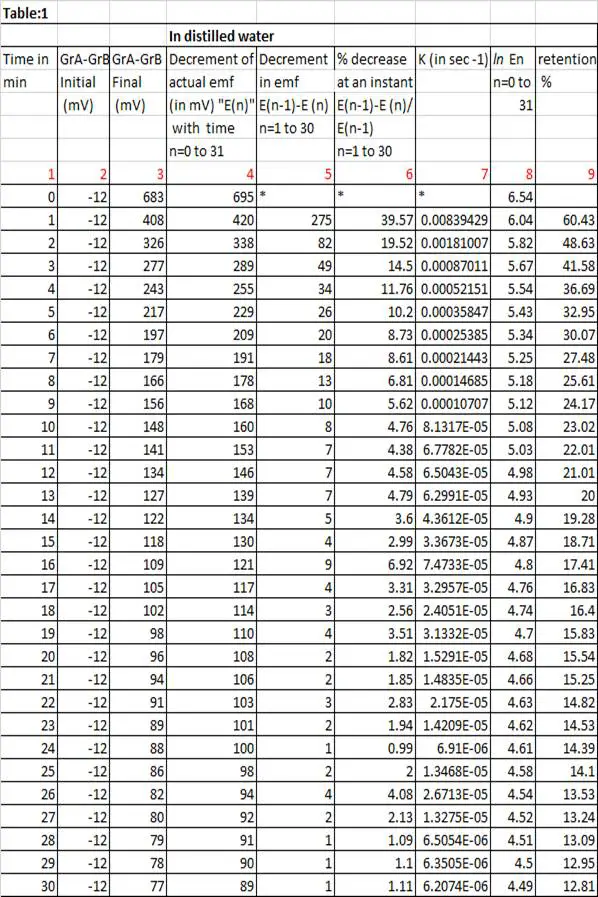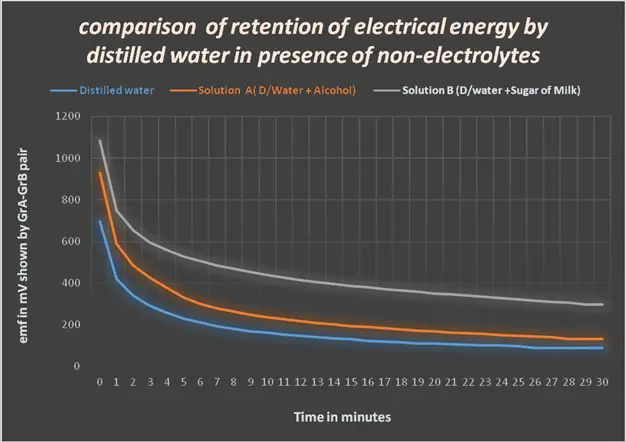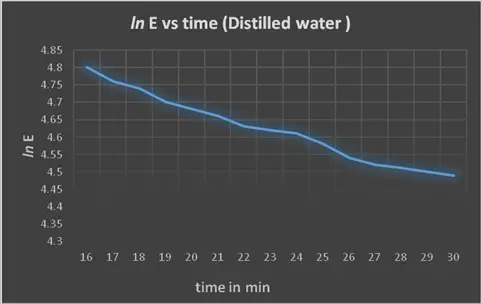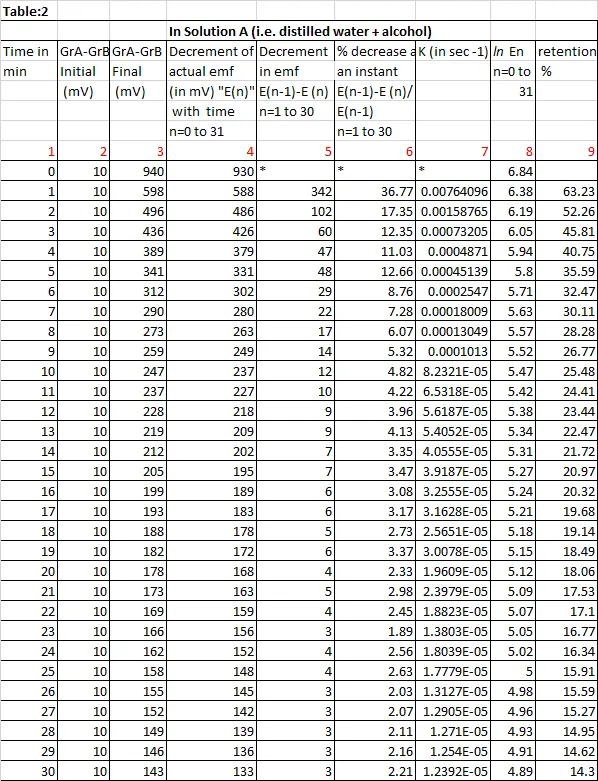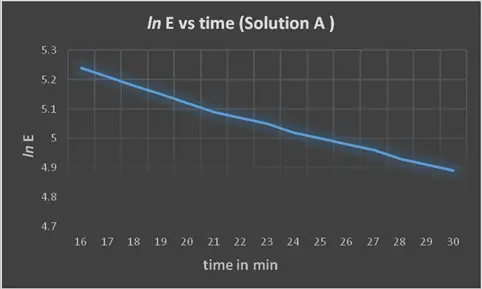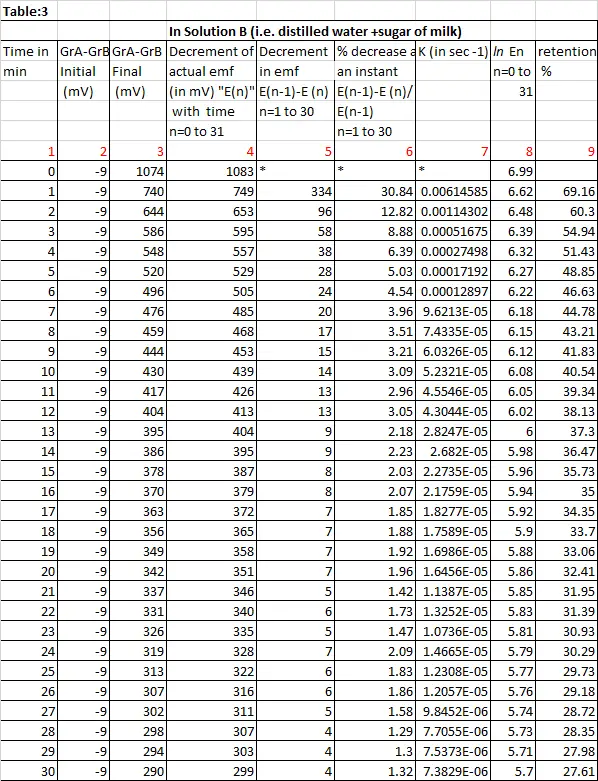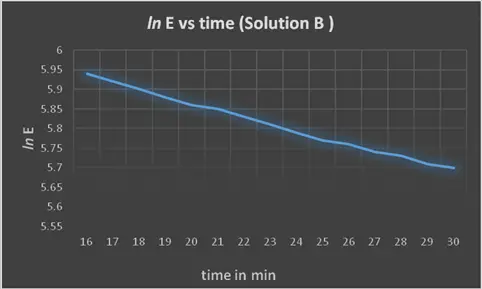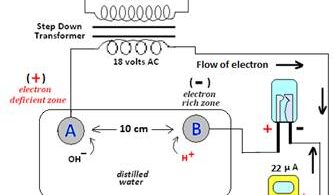The Exponential Release of Electrical Strain Grades Water- Peerless Vehicle for Homeopathic Remedies
The importance of vehicle in conveying medicinal constituents is well known in all systems of medicine. The most important property for a vehicle is to remain inert throughout the entire transportation (i.e. it should not alter the properties of the medicinal components while passing on the same to the target). The important vehicles used in the homeopathic system are usually distilled water, alcohol and sugar of milk. Soon after the discovery of Avogadro’s number it came to light that hardly any molecule of medicinal component is left in higher dilutions, i.e. after the 12c potency. This in turn led to a certain confusion regarding the transmission of medicinal effects through such vehicles, i.e. when no molecule is left for transmission, what is actually conveyed by this vehicle. Through our works we have shown that it is not the molecules but the electrical energy of a substance that is carried through the serial dilution in the homeopathic medicinal system1.
In fact, whenever a solute is added to water the former changes the molecular orientations of the latter .This is due to the fact that the solute may be polar or non-polar but water being polar is able to bring induced polarity even in non-polar molecules. That is how the electrical energy of a substance is induced in the vehicle through changes in its molecular orientations2. It had remained a question whether distilled water was able to retain electrical energy, and we have shown in our further works that distilled water can retain electrical energy through its molecular orientations3. The question as to what extent, has remained unexplored.
Moreover, as homeopathic medicines are administered both in solid state (i.e. sugar of milk) and liquid state (i.e. alcohol or water), there remained the question as to what allows medicinal effects to be carried in both the states.
To see what makes distilled water suitable to be used as a homeopathic vehicle we performed the following experiment.
Materials Used: Graphite rods, Beakers, meter, distilled water,9 volt battery, stop watch, homeopathic alcohol (66% v/v), sugar of milk.
Experiment 1: A beaker containing 5 ml of distilled water is taken and two graphite (Gr) electrodes (GrA & GrB ) are placed in it. The emf of the two Gr electrodes is measured and recorded in table 2 as initial emf. A 9 volt battery is connected to the graphite pair and current is allowed to pass for 2 minutes. After the current through the circuit is stopped, the final readings for the graphite pair (GrA & GrB ) are taken at intervals of 1(one) minute from “ 0” minutes onward (i.e. immediately after disconnecting the dc source) till 30 minutes.
Observations: The final emf for the graphite pair GrA&GrBare recorded in Table 1 along with other calculations as shown below.
Discussion: Though from column 5(Table 1) initially it is found that the emf at a particular instant decreases sharply from its preceding stage (i.e. 695-420=275mv at t=1 min, & 420-338=82mv at t=2 min), later decrease in emf is nearly the same (i.e.98-94=4mv at t=26 min, 94-92=2mv at t= 27min & 92-91=1mv at t=28min).
Also, it is found from column 6 of table 1 that percentage decrease in emf at any instant decreases with time. It is about 39.57% (i.e. at t=1 min 275mv/695mv x 100) initially followed by 19.52 (i.e. at t=2 min 82mv/4420mv x 100), 14.5 and 11.76 % while at the later stage it noticeably falls and it remained somewhere near 1-2%.
When the emf shown by the graphite pair in distilled water at a particular time is plotted against time, a curved line is obtained (Fig 1).
Fig 1
It shows that the decrease in emf with time is not uniform. The rate of decrease in emf becomes less and less with increase in time. It indicates that the decrease in emf at any time is dependent on the emf of its just preceding time.
The value of k, obtained using equation 2 below, in the later period of experiment is found to be nearly constant i.e. about 6.2 x10-6 sec–1 (Table1). Moreover ,when the logarithm of emf shown by the graphite pair in distilled water at a particular time ( for time t ≥ 16) is plotted against time, almost a straight line with a negative slope is obtained (fig2).
Fig 2
The above observations are quite similar to the “first order reactions” in chemistry (i.e. the number of atoms or molecules whose concentrations determine the velocity or kinetics, of the process) wherein the rate is directly proportional to the concentration of the reacting substance4,5. Mathematically ,i.e. the rate of disappearance of the reactant at any instant is proportional to its concentration c, at that instant.
Therefore, in the instant case of retention of electrical energy by the distilled water, it seems that the decrease in electrical energy content of distilled water at any instant is proportional to the electrical energy content E (emf), at that instant.
Mathematically :
This suggests that the electrical energy contained in the water declines exponentially with time and theoretically the induced electrical strain in water will be totally removed, (i.e. Et→ Ei) only when “ t” approaches infinity (i.e. t→∞) . In other words any possibility for the process to get complete as a whole seems impossible!
These type of negative exponential functions are well known in radioactive decays, cooling effects etc6.
Now to study the extent of retention of electrical strain in the case of alcohol and sugar of milk, that are often used as homeopathic vehicles, we performed the following experiments.
Experiment 2: The above experiment is performed in a closed container containing Solution A, i.e. a solution of alcohol in distilled water (30 drops of 66% alcohol added to 5 ml of distilled water) and readings are recorded in Table : 2 as done in experiment 1.
Observations: The final emf for the graphite pair GrA & GrB are recorded in Table 2 along with other calculations as shown therein
Also the logarithm of emf shown by the graphite pair at a particular time ( for time t ≥ 16) is plotted against time as shown in (Fig 3).
Fig 3
Experiment 3: A similar experiment is repeated, taking Solution B in a beaker, i.e. solution of sugar of milk in distilled water (100 mg of sugar of milk in 5 ml of distilled water) , and readings are recorded in Table : 3as recorded in the previous experiments.
Observations: The final emf for the graphite pair GrA & GrB are recorded in Table 3 along with other calculations as shown therein
Table 3:
Also the logarithm of emf shown by the graphite pair at a particular time ( for time t ≥ 16) is plotted against time as shown in (Fig 4).
Discussion :
In our earlier work we have shown that it is not the molecules but the electrical energy of a substance that is conveyed through water in homeopathic remedies, but here we find that not only distilled water but both Solution A (i.e.alcohol (Ethanol, C2H5OH) in distilled water) &Solution B (i.e. sugar of milk in distilled water ) are able to retain electrical energy.
From the results of all the three experiments it is found that:
- The curves are similar in nature (i.e. decreasing exponentially with time) in all the three experiments. While the rate of decrement of electrical strain (i.e ) is higher initially, but remarkably lower later. The curve appears almost parallel to x-axis, showing decrement in electrical energy to be quite negligible with time i.e. dE seems to approach zero .Now, as dE→ 0,-dE/dt=0 so it is clear that electrical energy is retained in water/solution. It seems that though the induced molecular orientations in water due to electrical strain changes rapidly initially with time, as shown by rapid fall in emf initially, the rate of fall of emf with time in the latter portion of the graph seems insignificant as the curves look almost parallel to the X-axis i.e. molecular orientations of water seems to stabilize the electrical strain in the later stage.
- When the logarithm of emf shown by the graphite pair at a particular time ( for time t ≥ 16) is plotted against time almost a straight line with a negative slope is obtained in all the three experiments (Fig1, Fig2 & Fig3).
- The value of k in the later period of the experiment is found to be nearly constant in all the three experiments i.e. about 6.2×10-6 sec-1for distilled water and about 1.2×10-5 sec-1& 7.3×10-6sec-1for solution A & solution B respectively.
- % decrease at any instant at the later stage of experiment is around 1-2% in all the three experiments.
- The trend of Electrical strain retention % is similar in all the three cases. The percentage retention for a specific instant is however, highest in sugar of milk solution while lowest in distilled water, i.e. in the order Solution B > Solution A> Distilled Water, say at 20 min, % retention of electrical energy for Solution B is 32.41 while for solution A & Distilled Water it is 18.06 and 15.54 respectively.
Moreover, having retained more electrical energy than distilled water, alcoholic solution (Solution A) and sugar solution (solution B) appear to be efficient vehicles for homeopathic a remedy. But how then does alcohol / sugar of milk retain electrical energy, they being non-electrolytes, is certainly a vital question. A bit more retention of electrical strain at any instant by solution A & Solution B than distilled water can be explained by the fact that in distilled water, immediately on stopping the passage of current from the external source/ battery, i.e. on removal of electrical strain, the induced molecular orientations of water changes rapidly to return to its normal orientations, as shown by the rapid fall in emf with time in all the three cases.
But the ease of getting back to the original orientations on removal of electrical strain is considerably inhibited in the case of alcoholic solution and solution of sugar of milk as shown by decreased fall of emf with time (i.e. in distilled water, % decrease in emf at t=1 is 39.57%,at t=2 is 19.52% and at t=3 is 14.5%) while the values for Solution A are 36.77%,17.35% and 12.35% & for Solution B are 30.84%,12.82% & 8.88%. It is due to the fact that the presence of C2H5OH in solution A & sugars present in Solution B help restrict rapid change in molecular orientation of water. The water being polar induces a dipole in the non-polar molecule C2H5OH in solution A & sugars present in Solution B. Due to induced polarity some sort of attraction prevails between the oppositely charged entities which in turn restrict any prompt change in orientations of water molecules.
Regarding the use of alcohol as a vehicle in homeopathic medicines, it can be attributed to the fact that actually the alcohol used contains water i.e. alcohols (Ethanol,C2H5OH) used are in the range of 60-70% (v/v) giving the clear impression that it is not the non-electrolyte alcohol but the presence of water within the alcohol itself that is resposible for retaining any electrical strain.
Similarly Sugar of milk being α Lactose monohydrate (C12H22O11.H2O) also contains water (the water of crystalization) along with two sugars galactose & glucose in condensed form. Thus, considering the relative atomic mass of hydrogen, carbon and oxygen to be about 1.008, 12.011 and 15.9994 respectively, a mass of 1mole of α Lactose monohydrate is about 360.32g. It seems 18g of water is contained in 360g of sugar of milk, i.e.the water content of sugar of milk is about 5%. It implies 1g of Milk sugar contains 0.05g of water. Eighteen g of water contains 6.023×1023 water molecules,0.05 g of water contains 0.05X6.023×1023 =3.0115×1022 molecules. It is thus clear that even 1mg of sugar of milk contains 3.0115×1022x10-3=3.0115×1019 molecules of water.Thus the presence of two sugars galactose & glucose in sugar of milk in condensed form help restrict change in molecular orientation of water, while retaining any electrical strain in the crystalline form. Here lies the magic of water even in the sugar of milk!
The above interpretations made from the observations and calculations for experiments 1 to 3 obviously reflect the mode of releasing electrical strain by both Solution A & Solution B to be like that of distilled water. Also from the trend of retention of electrical energy by solution of alcohol and sugar of milk it is clear that water contained in both are essentially used while using them as a vehicle for homeopathic remedies.
Thus the Alcohol & sugar of milk, being otherwise a very suitable vehicle for medicines, is indeed a good vehicle for homeopathic remedies owing to its water content.
Inference:
- The property of water to release electrical strain exponentially with time makes it an incomparable vehicle in homeopathic remedies.
- The water contained in the alcohol & sugar of milk make them act as vehicle in homeopathic remedies.
Reference:
[1]. The Electrical Energy of Substances –The Secret of Homeopathy, Ruhul Amin &BiplabChakraborty (Simillimum,vol.XXII, Summer Fall/ 2009 www.hanp.net)
[2] The Homeopathic Dilution-A New Explanation, Ruhul Amin, Biplab Chakraborty & Farook Rahaman (Simillimum,vol.XXI,Summer Fall/2008. www.hanp.net
[3]Water the Magic Liquid: Retaining Electrical Energy, Ruhul Amin & Biplab Chakraborty (Published in Homeopathy For Everyone April 2012 hpathy.com)
[4]Physical Chemistry, S Glasstone, 2nd Edition, 1946
[5]Physical Chemistry, W.J Moore, Fourth Edition
[6] Wikipedia

